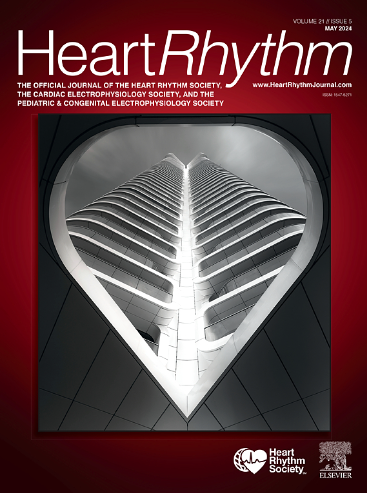利用真实世界的观察数据评估心脏导联的安全性:EP PASSION 概念验证研究。
IF 5.6
2区 医学
Q1 CARDIAC & CARDIOVASCULAR SYSTEMS
引用次数: 0
摘要
背景:传统的批准后研究(PAS)设计已被监管机构接受,以满足心脏导联上市后的要求,但它们存在一些局限性:作者对利用真实世界数据(RWD)评估大量患者人群中导联安全性的替代方法进行了概念验证研究:雅培患者设备数据库与医疗保险付费服务 (FFS) 索赔相链接,以确定植入雅培 Optisure™ 导联的患者中导联并发症的情况。在 444 名加入联邦医疗保险 FFS 的 PAS 受试者中,对检测机械导联相关并发症事件的 PAS 方法和 RWD 方法进行了 1:1 比较。使用 McNemar 检验和 Cohen's kappa 评估了两种方法之间的一致性。使用±2.5%的等效接受标准比较了PAS和RWD组群3年无并发症的存活率:在 2014 年 8 月 27 日至 2016 年 6 月 14 日期间,有 1171 名 PAS 患者和 5804 名联邦医疗保险 FFS 患者接受了 Optisure™ 导联。患者随访至 2018 年 12 月 31 日。PAS 报告的并发症与理赔发现的并发症完全一致(McNemar's p 值=1.00,Cohen's Kappa = 1.0)。使用 RWD 方法的 3 年无并发症生存率为 98.4%(95% CL:98.0%-98.7%),在 PAS 98.4%(95% CL:97.6%-99.0%)的可接受范围内:这些结果表明,RWD 检测到的铅并发症发生率与 PAS 报告的铅并发症发生率非常接近,这凸显了基于 RWD 的方法在增强铅安全性临床证据生成方面的潜在优势。本文章由计算机程序翻译,如有差异,请以英文原文为准。
Evaluating cardiac lead safety using observational, real-world data: EP PASSION proof-of-concept study
Background
Traditional post-approval study (PAS) designs have been accepted by regulatory authorities to fulfill postmarketing requirements for cardiac leads, but they have several limitations.
Objective
We conducted a proof-of-concept study of alternative methods that use real-world data (RWD) to evaluate lead safety in large populations of patients.
Methods
Abbott patient device databases were linked with Medicare Fee-For-Service (FFS) claims to identify lead complications in patients implanted with Abbott Optisure lead. A 1:1 comparison between the PAS method and RWD method of detecting mechanical lead–related complication events was conducted in 444 PAS participants who were enrolled in Medicare FFS. Agreement between methods was evaluated by McNemar test and Cohen κ. Survival free from complications at 3 years was compared between the PAS and RWD cohorts with an equivalence acceptance criterion of ±2.5%.
Results
There were 1171 PAS patients and 5804 Medicare FFS patients who received an Optisure lead between August 27, 2014, and June 14, 2016. Patients were observed through December 31, 2018. Complete agreement was found between PAS-reported and claims-detected complications (McNemar P value = 1; Cohen κ = 1). Survival free from complications at 3 years by the RWD method was 98.4% (95% confidence limit, 98.0%–98.7%), which was within the acceptable range of the PAS 98.4% (95% confidence limit, 97.6%–99.0%).
Conclusion
These results show a close agreement between RWD-detected and PAS-reported lead complication rates, which highlights the potential benefits of RWD-based methods to enhance the generation of clinical evidence for lead safety.
求助全文
通过发布文献求助,成功后即可免费获取论文全文。
去求助
来源期刊

Heart rhythm
医学-心血管系统
CiteScore
10.50
自引率
5.50%
发文量
1465
审稿时长
24 days
期刊介绍:
HeartRhythm, the official Journal of the Heart Rhythm Society and the Cardiac Electrophysiology Society, is a unique journal for fundamental discovery and clinical applicability.
HeartRhythm integrates the entire cardiac electrophysiology (EP) community from basic and clinical academic researchers, private practitioners, engineers, allied professionals, industry, and trainees, all of whom are vital and interdependent members of our EP community.
The Heart Rhythm Society is the international leader in science, education, and advocacy for cardiac arrhythmia professionals and patients, and the primary information resource on heart rhythm disorders. Its mission is to improve the care of patients by promoting research, education, and optimal health care policies and standards.
 求助内容:
求助内容: 应助结果提醒方式:
应助结果提醒方式:


